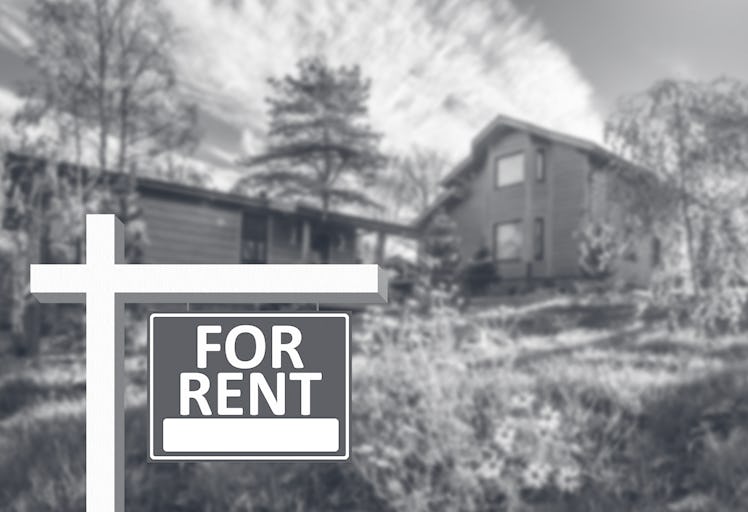Minimum Wage Workers Can't Afford Rent In Most Of America's 50 Biggest Cities
Two parents who work minimum wage jobs can only afford a two-bedroom apartment in 10 out of the 50 biggest cities in the U.S.

A new report from Zillow has stark findings for housing affordability in the United States. The report examined the affordability of two-bedroom apartments for minimum wage earners and found that two workers with full-time, minimum wage jobs can only afford a two-bedroom apartment in 10 out of the 50 biggest cities in the U.S.
“Using minimum wage data from the Economic Policy Institute, Zillow analyzed how many full-time minimum wage jobs would be required to afford the typical rent in the 50 largest U.S. cities and in the U.S. overall,” the site explains.
Zillow identifies “full-time” as a standard 40-hour workweek, and used 2021 rent data from the 5-year American Community Survey from the U.S. Census Bureau, which gathers data over a period of several years, for one-bedroom, two-bedroom, and overall rentals. They defined “affordable” apartments in the same way the federal government does — “no more than 30% of the total household monthly income can be spent on rent payments each month.”
The results were startling. The report further drives home that the federal minimum wage, which has remained unchanged since 2009 at $7.25 an hour, needs to be raised. It’s also important to note that in cities and states that have set their own minimum wage much higher than the federal minimum, apartment affordability problems were not nearly as stark.
For example, those who live in cities with higher minimum wages than the federal level would need an average of 2.5 full-time workers to afford a two-bedroom rental. In Fresno, California, where workers earn a minimum wage that is over double the federal minimum wage, only 1.6 workers are needed to afford a two-bedroom apartment in the city.
But for those who live in cities with the federal minimum wage, residents would need, on average, 3.5 full-time workers to afford a typical two-bedroom rental. The averages hide the scariest statistics, however; in Austin, Texas, for example, over 5 minimum wage workers would be needed to afford a two-bedroom apartment.
And of course, just because some cities have higher minimum wages doesn’t mean that apartments there are more affordable. In New York City, for example, which has a minimum wage of $15 an hour, 2.7 full-time workers are needed to afford the average two-bedroom rental. In San Francisco, which has a $16.99 per hour minimum wage, more than 3 full-time workers are needed to afford a two-bedroom apartment.
The matrix of higher wages and affordability isn’t a one-to-one, although there’s a clear trend that lower wages lead to less affordability and higher wages are better for renters.
After all, of the 50 big cities in the study, only 10 would require two or fewer full-time minimum wage workers to afford a typical two-bedroom rental, Zillow states. Each of those 10 cities has a minimum wage of $10 an hour or more. “These higher minimum wages help workers in these cities more easily afford rent and stay afloat,” Zillow notes.
According to Zillow’s analysis, the average city across the U.S. would need 3.8 full-time workers to afford a 2-bedroom rental.
Cities that would require the “most” full-time workers to afford a two-bedroom rental:
- Austin, Texas, with a minimum wage of $7.25 an hour, would need 5.1 workers to afford a two-bedroom rental
- Atlanta, Georgia, with a minimum wage of $7.25 an hour, would need 4.8 workers to afford a two-bedroom rental
- Charlotte, North Carolina, with a minimum wage of $7.25 an hour, would need 4.5 workers to afford a two-bedroom rental
- Nashville, Tennessee, with a minimum wage of $7.25 an hour, would need 4.2 workers to afford a two-bedroom rental
- Dallas, Texas, with a minimum wage of $7.25 an hour, would need 4.1 workers to afford a two-bedroom rental
- Raleigh, North Carolina, with a minimum wage of $7.25 an hour, would need 4 workers to afford a two-bedroom
- Miami, Florida, with a minimum wage of $11 an hour, would need 3.9 workers to afford a two-bedroom rental
- San Antonio, Texas, with a minimum wage of $7.25 an hour, would need 3.8 workers to afford a two-bedroom
- Fort Worth, Texas, with a minimum wage of $7.25 an hour, would need 3.8 workers to afford a two-bedroom rental
- Honolulu, Hawaii, with a minimum wage of $12 an hour, would need 3.7 workers to afford a two-bedroom rental
Cities that require the “fewest” full-time workers to afford a two-bedroom rental:
- Fresno, California, with a minimum wage of $15.50 an hour, would need 1.6 workers to afford a two-bedroom rental
- Tucson, Arizona, with a minimum wage of $13.85 an hour, would need would need 1.8 workers to afford a two-bedroom rental
- Mesa, Arizona, with a minimum wage of $13.85 an hour, would need would need 1.9 workers to afford a two-bedroom rental
- Minneapolis, Minnesota, with a minimum wage of $15.19 an hour, would need 1.9 workers to afford a two-bedroom rental
- Cleveland, Ohio, with a minimum wage of $10.10 an hour, would need 1.9 workers to afford a two-bedroom rental
- Chicago, Illinois, with a minimum wage of $15.40 an hour, would need 2.1 workers to afford a two-bedroom rental
- Sacramento, California, with a minimum wage of $15.50 an hour, would need 2 workers to afford a two-bedroom rental
- Albuquerque, New Mexico, with a minimum wage of $12 an hour, would need 2 workers to afford a two-bedroom rental
- Phoenix, Arizona, with a minimum wage of $13.85 an hour, would need 2 workers to afford a two-bedroom rental
- Baltimore, Maryland, with a minimum wage of $13.25 an hour, would need 2 workers to afford a two-bedroom rental
To read the full report, head to Zillow.